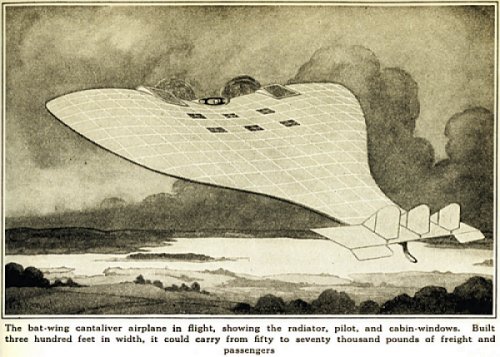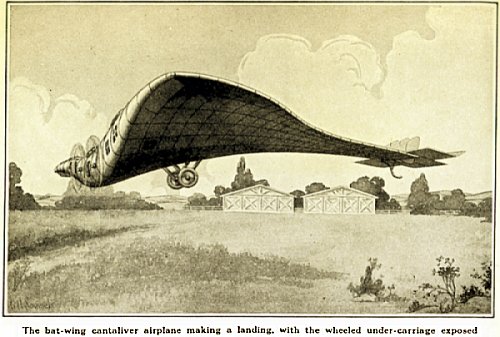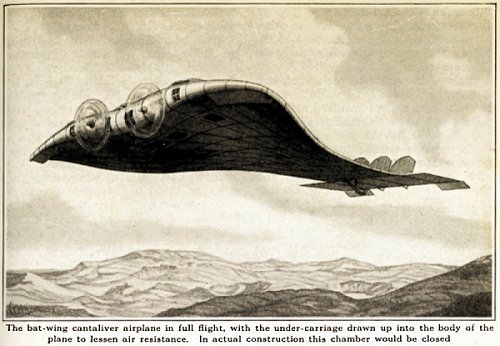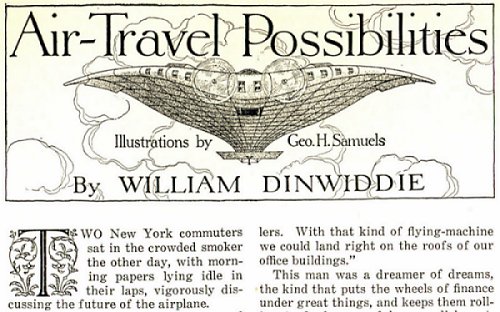A Crystal Ball
Today, a crystal ball. The University of Houston's College of Engineering presents this series about the machines that make our civilization run, and the people whose ingenuity created them.
I've often said that the future cannot be predicted. Yet, every now and then, someone extrapolates from our present state of affairs and gets a part of it right. Here's an example: William Dinwiddie writes about "Air-Travel Possibilities" in the 1918 Century Magazine. His intelligent, halfway-correct guesswork says a lot about our own attempts to see what's coming.
Dinwiddie imagines an aeronautical engineer overhearing two businessmen in the smoker car of a commuter train. One suggests that they'll soon fly from home to office. The other scoffs at the idea. The engineer then says, "Let's look at the facts."
He points out that home-to-office airplanes would have to be what we call helicopters or autogiros. Neither was yet developed, but the word helicopterexisted. He knows that an overhead propeller will drive the body to rotate the opposite direction, so he suggests that two counter-rotating propellers will hold it steady. Twenty-one years later, Sikorsky did that with a tail propeller.
But he correctly sees that more of the public will be served with heavy-load-carrying, long-distance airplanes, and he begins with the technology of his day. What would it take to lift a one-million-pound airplane and fly it at a hundred miles-an-hour from New York to London? He calculates about 40,000 horsepower. That'd be a hundred of the existing 400-HP Liberty engines. But he's confident that they'll soon have airplane engines with ten times as much power.
Today, the latest Airbus weighs more than a million pounds at takeoff. But it uses ten times more power than Dinwiddie had hoped for. It flies five or six times as fast and has three times the range. Dinwiddie's hopes were really pretty conservative.
At the time he wrote, no airplane could yet match the speed of a racecar, and he failed to see how much faster air travel would become. He did speak of streamlining, but he saw it as means for reducing the fuel load, rather than for attaining high speed.
He suggested a flying wing design. He called it a Bat Wing cantilever airplane. It had no struts or guy-wires and all its structure was encased. It was to be shaped very much like a manta ray -- straight in front, and tapered back to the tail. It had a thick airfoil shape -- ideal for slow-speed flight. He imagined a retractable landing gear, another device not yet in use.
Flying wings have appeared now and then, ever since. One of the more recent was the Stealth Bomber. It, however, has a very thin wing with a thickened body embedded in it.
So our intelligent soothsayer Dinwiddie got a lot right. He knew the issues, and he traced them out logically. What was missing is what's missing in all such predictions -- the illogic of invention. Among the many developments he had no way of anticipating was the jet engine. And it alone was enough to do a complete end-run on all his rational thinking about the future.
I'm John Lienhard, at the University of Houston, where we're interested in the way inventive minds work.
W. Dinwiddie, Air-Travel Possibilities. The Century Magazine, June, 1918, pp. 258-265.
The four Images below are from the Dinwiddie article. The Liberty Engine photo (see link above) was taken by JHL at the American Museum at Duxford, England.



